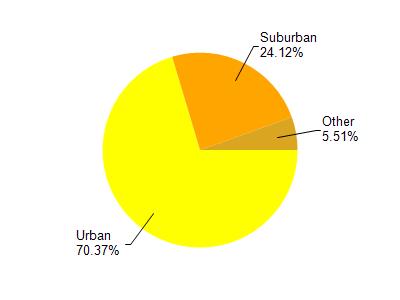Milwaukee
No
No
No
Fish and Aquatic Life
Overview
Bacterial pollution in coastal waters is caused by a combination of point and nonpoint sources of pollution. Although point sources of bacterial contamination (e.g., industry, wastewater treatment facilities) are significant, nonpoint source pollution poses a much greater threat to the integrity of recreational water bodies because it comprises a diverse mixture of chemical and biological contaminants and is discharged from countless undefined sites within a given watershed. Pollutants accumulate in storm water as it is washed off impervious surfaces and discharged into local waterways. With increasing urbanization of the nation's coastal areas, pollution of waterways by storm water is a growing concern. In a report to Congress, the EPA states that nonpoint sources of pollution are the greatest threat to the nation’s water quality.9 Examples of point and nonpoint sources of pollution include these: Sanitary sewage overflows (SSOs) Combined sewer overflows (CSOs) Septic systems Boating waste discharge Urban storm water runoff Agricultural runoff Waste from domestic pets and wildlife
From: http://www.actionbioscience.org/environment/Jensen_McLellan.html
Date 2011
Author Aquatic Biologist
Condition
Wisconsin has over 84,000 miles of streams, 15,000 lakes and milllions of acres of wetlands. Assessing the condition of this vast amount of water is challenging. The state's water monitoring program uses a media-based, cross-program approach to analyze water condition. An updated monitoring strategy (2015-2020) is now available. Compliance with Clean Water Act fishable, swimmable standards are located in the Executive Summary of Water Condition in 2018. See also the 'monitoring and projects' tab.
Reports
Management Goals
Wisconsin's Water Quality Standards provide qualitative and quantitative goals for waters that are protective of Fishable, Swimmable conditions [Learn more]. Waters that do not meet water quality standards are considered impaired and restoration actions are planned and carried out until the water is once again fishable and swimmable
Management goals can include creation or implementation of a Total Maximum Daily Load analysis, a Nine Key Element Plan, or other restoration work, education and outreach and more. If specific recommendations exist for this water, they will be displayed below online.
Monitoring
Monitoring the condition of a river, stream, or lake includes gathering physical, chemical, biological, and habitat data. Comprehensive studies often gather all these parameters in great detail, while lighter assessment events will involve sampling physical, chemical and biological data such as macroinvertebrates. Aquatic macroinvertebrates and fish communities integrate watershed or catchment condition, providing great insight into overall ecosystem health. Chemical and habitat parameters tell researchers more about human induced problems including contaminated runoff, point source dischargers, or habitat issues that foster or limit the potential of aquatic communities to thrive in a given area. Wisconsin's Water Monitoring Strategy was recenty updated.
Grants and Management Projects
| Project Name (Click for Details) | Year Started |
|---|
|
|
Monitoring Projects
| WBIC | Official Waterbody Name | Station ID | Station Name | Earliest Fieldwork Date | Latest Fieldwork Date | View Station | View Data |
|---|
| 15100 | Kinnickinnic River | 413112 | Kinnickinnic River - Rexnord Inc (Nordberg Div) - 001 | 5/14/1975 | 5/14/1975 | Map | Data |
|

Watershed Characteristics
Milwaukee Harbor is located in the Kinnickinnic River watershed which is 33.35 mi². Land use in the watershed is primarily urban (70.30%), suburban (24.10%) and a mix of forest (2.80%) and other uses (2.70%). This watershed has 26.80 stream miles, 4,950.14 lake acres and 68.30 wetland acres.
Nonpoint Source Characteristics
This watershed is ranked High for runoff impacts on streams, High for runoff impacts on lakes and High for runoff impacts on groundwater and therefore has an overall rank of High. This value can be used in ranking the watershed or individual waterbodies for grant funding under state and county programs.However, all waters are affected by diffuse pollutant sources regardless of initial water quality. Applications for specific runoff projects under state or county grant programs may be pursued. For more information, go to surface water program grants.